It’s rare for a sound to vanish from the sky, but on Wednesday morning, one will. When flight HA866 from Pago Pago in American Samoa lands in Honolulu at 5:39 a.m., it will mark the last time the words “Hawaiian eight six six heavy” echo over island air traffic radio.
This moment marks the completion of Hawaiian’s merger with Alaska Airlines. The Federal Aviation Administration has retired Hawaiian’s HA call sign and code, officially moving all flights to Alaska’s AS identifier. For 95 years, Hawaiian Airlines bridged Hawaii’s distance with warmth and grace. Flight HA866 will quietly close a chapter that began in 1929.
For travelers, the aircraft and the smiles may look familiar. But behind the scenes, the transition is complete.
Key details of the last HA.
Final HA flight: HA866, Pago Pago to Honolulu
Landing time: 5:39 a.m., October 29, 2025
Years of operation: 95 (1929–2025)
New call sign: AS (Alaska Airlines)
What stays: Hawaiian livery, branding on island routes (at least for now)
What changes: Flight codes, operations, pilot communications
We’ve been part of many celebrations with Hawaiian Airlines over the past 20 years. Our lead photo shows us outside Grand Central Station in New York in 2012, to mark the start of service between HNL and JFK. We were also there for the inaugural A321neo Hawaiian flight from Maui. And editor Jeff attended the Dreamliner preview at HNL. It’s sad for us here at Beat of Hawaii to see the HA call sign ending.
What Hawaiian Airlines passengers need to know.
Existing tickets remain valid. Passengers booked under HA numbers will automatically transition to Alaska’s AS code, with no action required.
HawaiianMiles members have been migrated into the Atmos Rewards system, which Alaska launched earlier this year. For most travelers, balances and elite tiers transferred easily, but the program’s structure still feels different. Free meals, island music, and signature touches will continue on flights branded as Hawaiian for now.
Hawaiian’s A330s will keep their familiar pink-and-purple Pualani tails while fleet integration continues. A new paint scheme may or may not be part of the plans.
“I’ve flown Hawaiian since my honeymoon in 1982. There was nothing like hearing that call sign as we approached Honolulu. It always felt like coming home.” — Ken
“I hope the friendly crews and local food don’t change. That’s what makes Hawaiian feel different from every other airline.” — Debbie
“If Alaska keeps the people, not just the planes, they’ll keep what made Hawaiian special.” — Chris
Hawaiian Airlines’ humble beginnings: flying boats and Bellancas.
Hawaiian’s story began long before there were jets or even paved runways. Its roots trace back to Inter-Island Airways and the Bellanca CH-300 Pacemaker, which first linked Honolulu and Hilo in 1929.
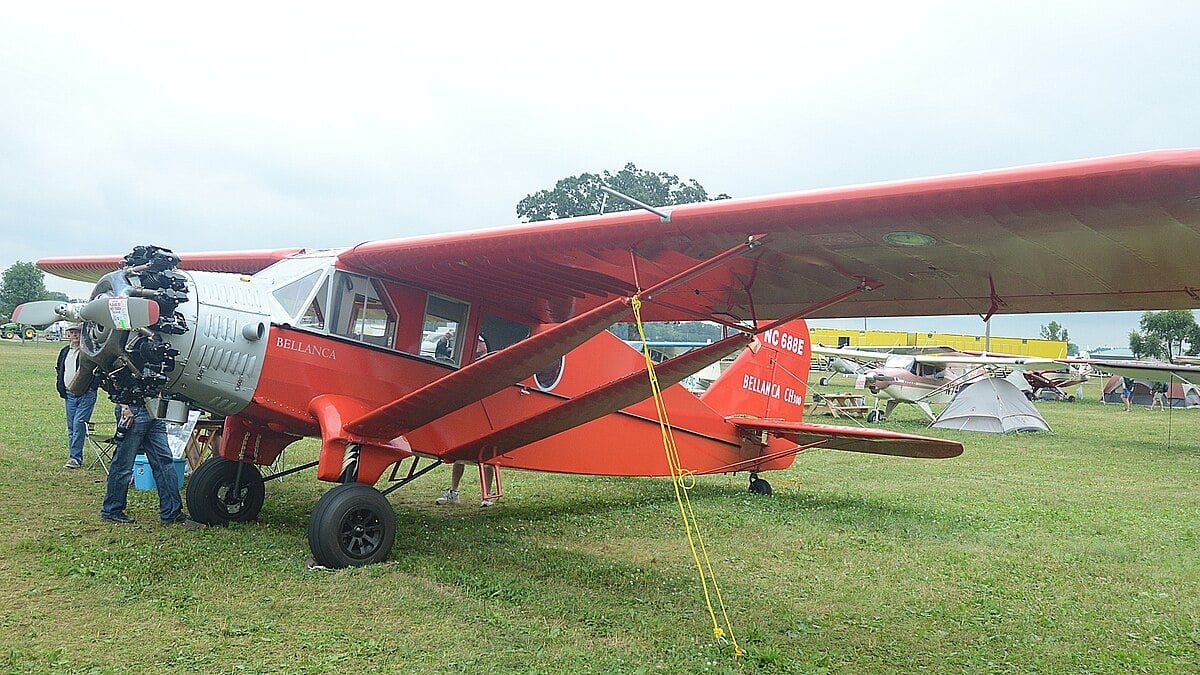

Those first flights were part adventure and part experiment. Within a decade, Inter-Island Airways added Sikorsky flying boats that touched down directly on Hilo Bay. By the 1940s, the airline had evolved into Hawaiian Airlines, a name that remains inseparable from island life to this day.
The Jet Age: When flying Hawaiian was an integral part of the vacation.
In the 1950s and 60s, flying Hawaiian wasn’t just transportation. It was stepping into a world where the journey itself felt like a vacation.
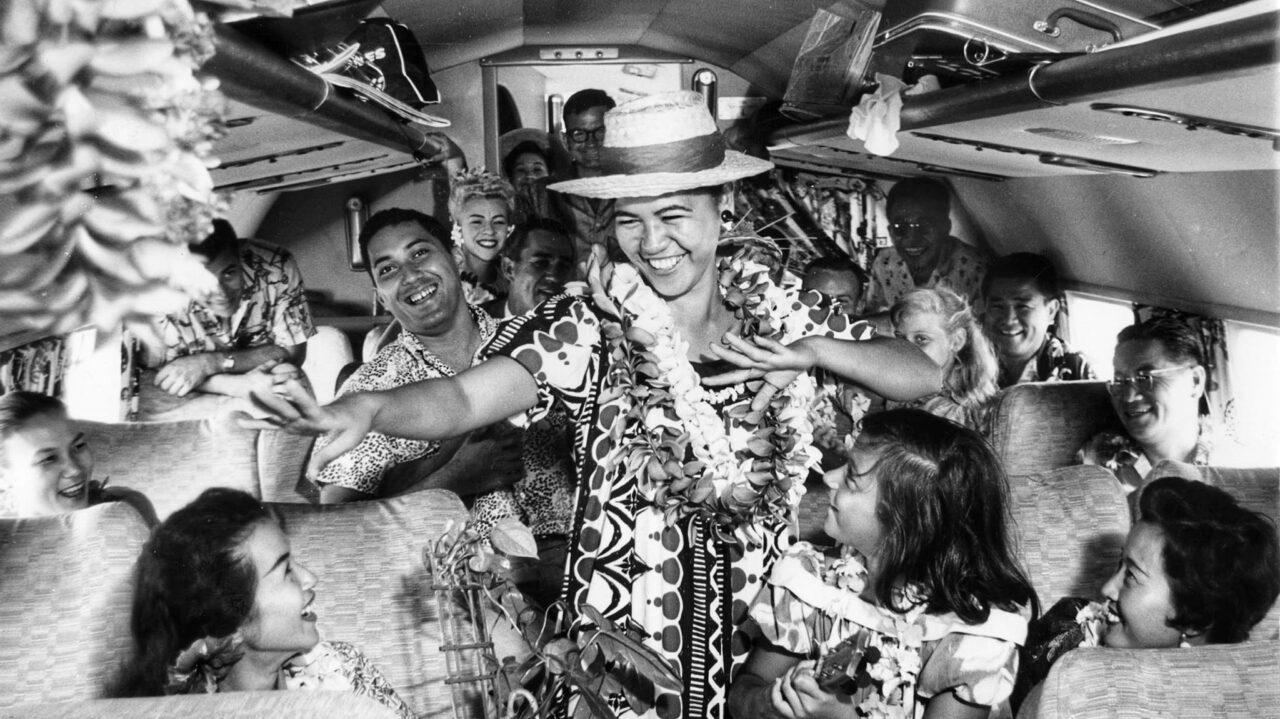

Flight attendants welcomed passengers with leis, ukuleles, and island warmth. These tailored jackets gave way to pillbox hats, and eventually to bold prints that matched the mood of the changing times.
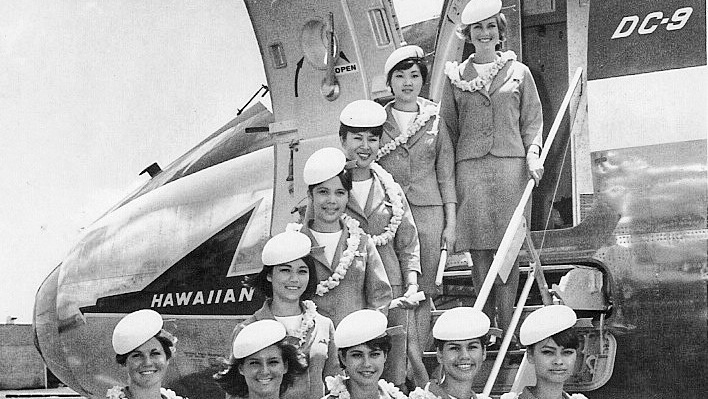

When Hawaiian introduced the DC-9, under half-hour hops between islands became routine. The hum of those engines defined daily life across the state, connecting commuters, students, and visitors through Honolulu’s open-air terminal.
Hawaiian’s 1970s transformation: L-1011s and the iconic Pualani brand.
The 1970s ushered in bold colors, mod prints, and a new fleet to match the era’s energy.
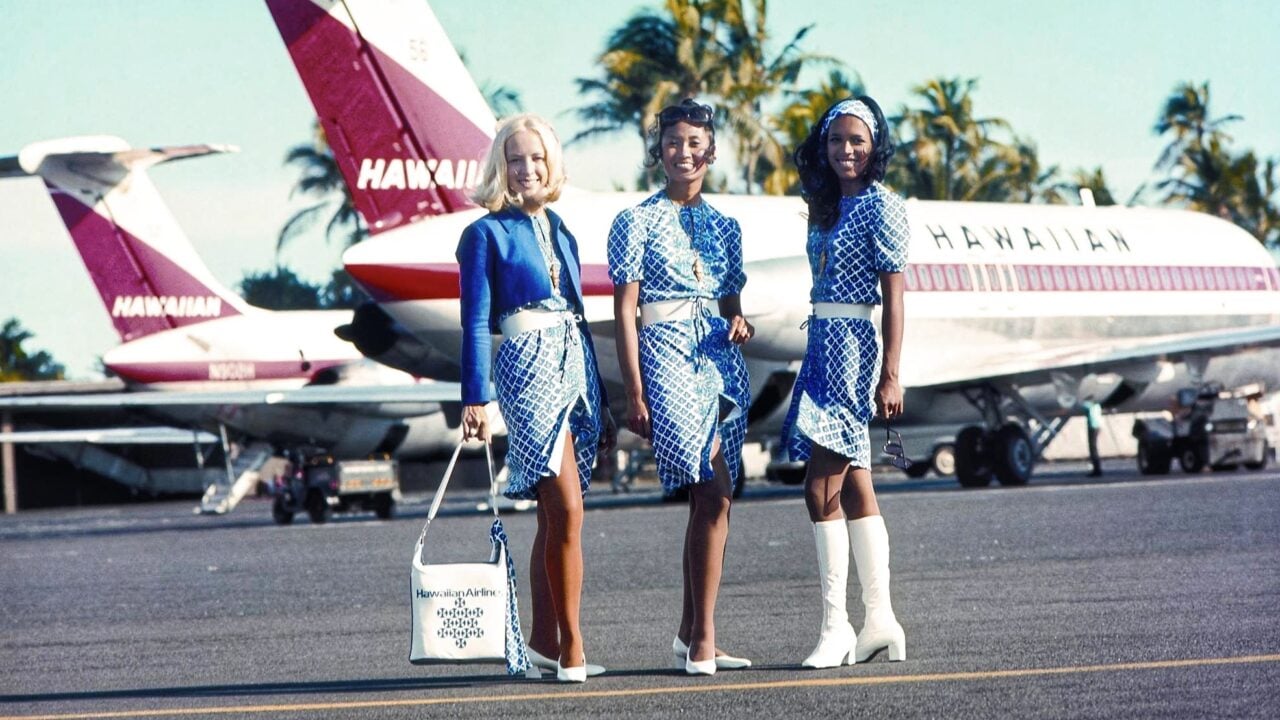

Hawaiian joined the global jet age with its new L-1011 TriStars, elegant three-engine jets with bright hibiscus tails, opening nonstop flights to the mainland.
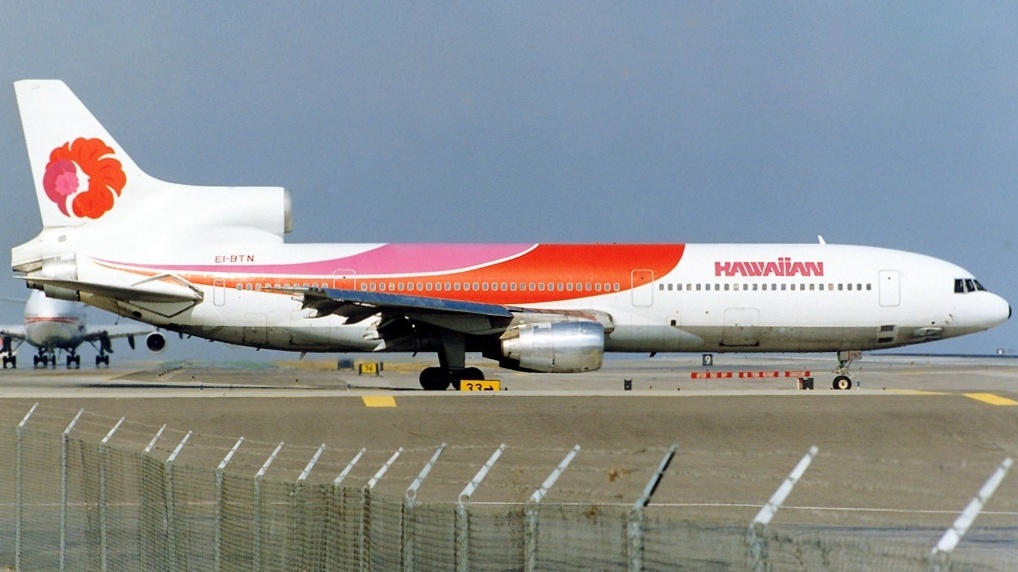

Onboard lounges, elaborate tropical meal service, and even bar seating made long-haul flying feel like a tropical vacation.
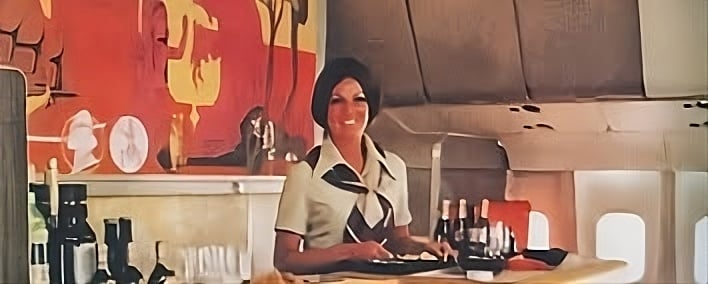

Those years also gave rise to Pualani, the “flower of the sky,” the smiling face that became the symbol of island homecoming for generations of travelers.
The modern era: from Convairs to A330s.
By the 1990s and 2000s, Hawaiian had transformed again with new branding, new destinations, new fleets, and a renewed focus on domestic and international long-haul routes.
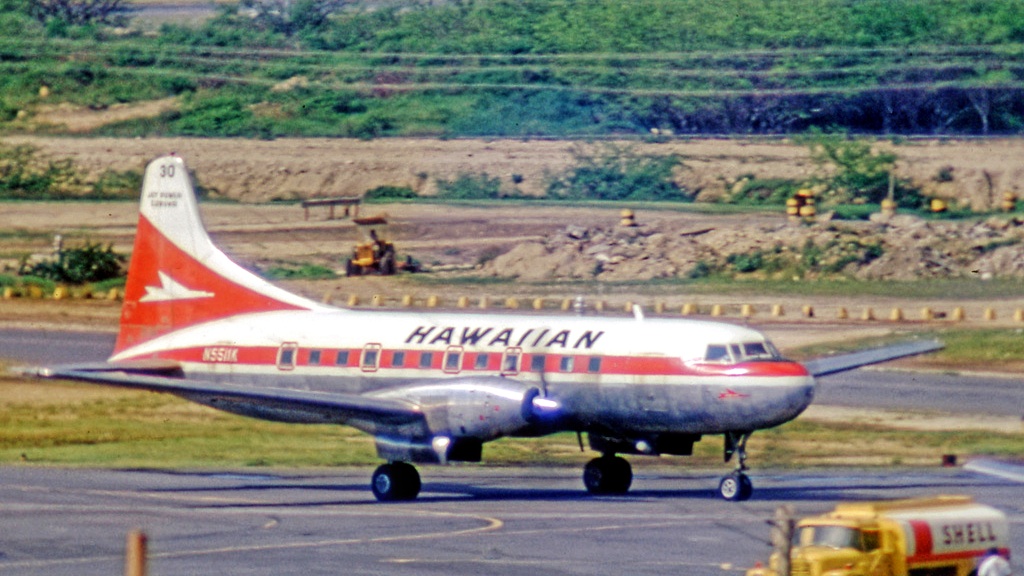

The airline retired its DC-10s in favor of Boeing 767s and later Airbus A330s, followed by A321neos, expanding deep into the Pacific and to the U.S. mainland.
The A330/A321 fleets remain the backbone of Hawaiian’s international and transpacific network. Under Alaska’s certificate, those aircraft will continue flying. Still, for the first time in nearly a century, they will do so without the HA identifier found anywhere in their flight plans.
What happens to Hawaiian Airlines employees after the merger?
The merger affects roughly 7,000 Hawaiian Airlines employees, all now part of Alaska’s corporate family. Pilots and flight attendants are still working to retain their seniority under the upcoming merged labor agreements, but training, systems, and scheduling are already transitioning to Alaska’s standards.
Executives have said both brands will continue to operate with unique identities for now. Yet many employees acknowledge uncertainty about how long that duality in structure can last.
Ground agents told us this week that Hawaiian Airlines uniforms are also being retired, with staff transitioning to Alaska Airlines uniforms. They said the change would take effect immediately as the merger moves under one operating certificate. When we asked flight attendants about their own uniforms, they hadn’t yet been told whether they would also change or when.
“I worked for the airline for 23 years. We were a family. I hope Alaska understands that what made Hawaiian special wasn’t just the paint job.” — Leilani
“It’s bittersweet. We knew this was coming, but hearing the HA call sign vanish still hits hard.” — Jordan
Why the HA call sign will be missed.
Retiring the HA call sign isn’t just an administrative change. It’s the end of a voice and a history, every clearance, every landing, every exchange between pilot and tower.
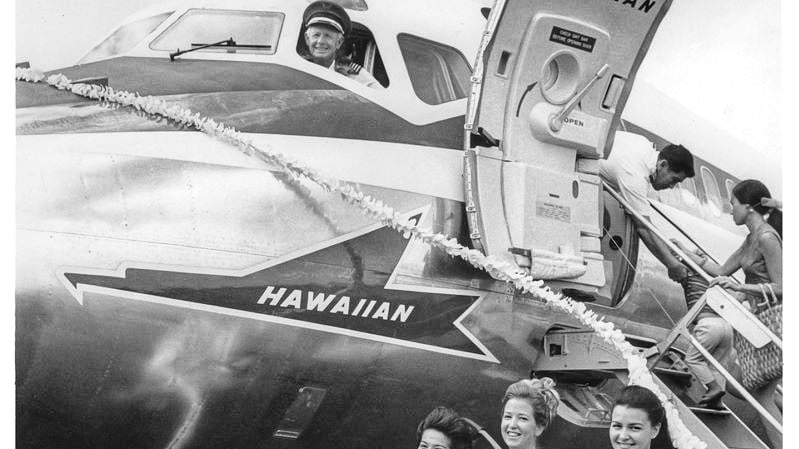

When HA866 lands in Honolulu on October 29, it will close the last active flight plan bearing that call sign. Operationally, the HA era is over.
“As a kid, I watched those DC-9s take off from Kahului every day. It’s hard to imagine island skies without them.” — Paul
“Losing the Hawaiian name in the sky feels like losing part of Hawaii itself.” — Cindy
What remains for travelers and crews.
The faces, the service, and the aircraft will still carry the Hawaiian name for now. But after Wednesday, they will fly under Alaska’s code and call sign. It’s a practical shift, but emotionally, it feels like the end of something much more.
For travelers, the merger means expanded connectivity and reciprocal elite benefits. But Hawaiian was more than an airline. It was an identity. Its call sign connected generations of island residents, visitors, and employees in a uniquely local way that no system integration can replace.
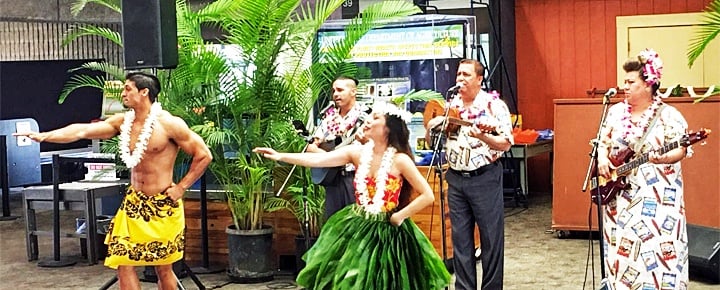

What’s your earliest memory of flying Hawaiian Airlines?
Get Breaking Hawaii Travel News


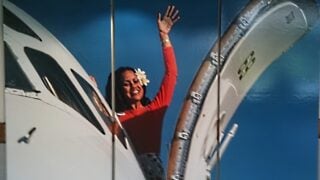

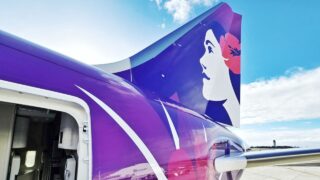

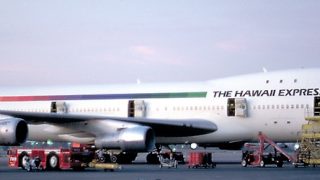
Hope they keep it Hawaiian or it will eventually fail…! Work clothes and the name on the jet! Aloha’s🤙🏼
As loyal Hawaiian Airlines platinum customers for 50 plus years, we are very disappointed that we no longer can use our HA miles (now Atmos points) to upgrade our seats. We hope that Alaska will reconsider their policy to allow us points to upgrade seats.
We are long time HA travelers from the California (40+ years). Have been apprehensive about Alaska’s HA acquisition. But, must report we just scheduled a trip and it went well with ATMOS. Fairly easy to use, HA miles were used for upgrade with no problems.
First flight with HA was June, 1965 from HNL to LIH. Can’t remember if it was the Convair 340, or one of the newly converted turbo-prop Convair 640s. I was 17 at that time, and felt really exotic for a kid from Ohio. The only HA plane I have not flown on all these years is the new 787. Great memories from all of those flights, be they short inter-island or Trans-Pacific.
Aloha to all.